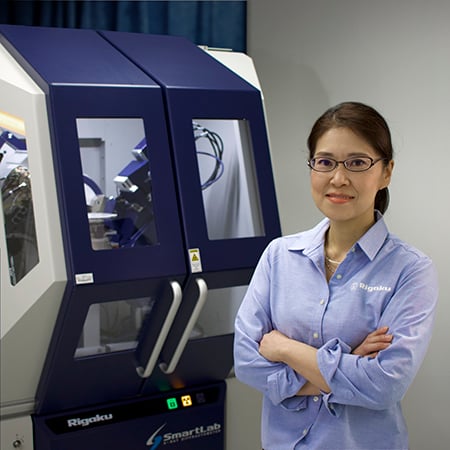Application Note BATT1013
Introduction
Anode material Si is a high-capacity material. To improve battery life, the particle diameter must be kept to no more than several dozen nm. In cases involving a diameter of 100 nm or less, the crystallite diameter can be calculated with XRD and the particle diameter can be calculated with SAXS (small-angle X-ray scattering).
Crystal phase analysis
- Analysis: Anode material
- Analysis method: Crystallite size analysis using FP method and model fitting using small-angle X-ray scattering
- Use: Improving battery lifetime
- Analyzed materials: Si

Figure 1: XRD profile (top) and SAXS profile (bottom) for Si samples

|
Sample |
D(nm) |
|
Crystallite diameter (XRD) |
40.4 |
|
Primary particle diameter (SAXS) |
39.6 |
|
Secondary particle diameter (SAXS) |
82.1 |
Figure 2: Crystallite diameter and particle diameter
(It was verified that the crystallite diameter and primary particle are equivalent and that a secondary particle is present)
Conclusion
When measuring crystallite and particle diameters in the range of several dozen nm, such as those in Si anodes, methods using XRD and SAXS are optimal.

